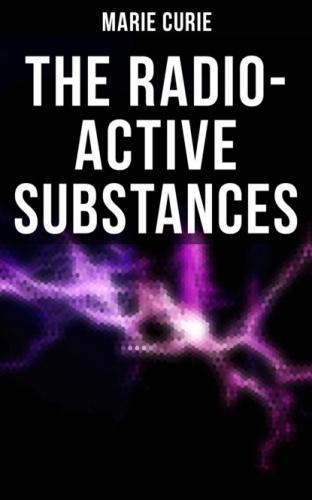Firstly, the number of ions produced per second in the gas is considered proportional to the energy of radiation absorbed by the gas.
Secondly, in order to obtain the limiting current relatively to a given radiation, it is necessary, on the one hand, to cause complete absorption of this radiation by the gas by employing a sufficient mass of it; on the other hand, it is necessary for the production of the current to use all the ions generated by establishing an electric field of such strength that the number of the ions which recombine may be a negligible fraction of the total number of ions produced in the same time, most of which are carried by the current to the electrodes. The strength of the electric field necessary to give this result is proportional to the amount of ionisation.
According to the recent researches of Mr. Townsend, the phenomenon is more complex when the pressure of the gas is low. At first the current appears to approach to a constant limiting value with increasing difference of potential; but after a certain point has been reached, the current begins again to increase with the field, and with very great rapidity. Mr. Townsend ascribes this increase to a new ionisation produced by the ions themselves when, under the action of the electric field, they acquire a velocity such that a molecule of gas encountering one of them becomes broken down into its constituent ions. A strong electric field and a low pressure are favourable to the production of this ionisation by ions already present, and, as soon as the action is set up, the intensity of the current increases uniformly with the field between the plates. The limiting current could, therefore, only be obtained under conditions of ionisation of which the intensity does not exceed a certain value, and in such a manner that saturation corresponds to fields in which, from multiplicity of ions, ionisation can no longer take place. This condition has occurred in my experiments.
The order of magnitude of the saturation currents obtained with uranium compounds is 10–11 ampères for a condenser in which the plates have a diameter of 8 c.m., and are at a distance of 3 c.m. Thorium compounds give rise to currents of the same order of magnitude, and the activity of the oxides of uranium and thorium is very similar.
Radio-activity of the Compounds of Uranium and Thorium.
The following are the figures I obtained with different uranium compounds. I have represented the intensity of the current in ampères by the letter i:—
| i × 1011. | |
|---|---|
| Metallic uranium (containing a little carbon) | 2·3 |
| Black oxide of uranium, U2O5 | 2·6 |
| Green oxide of uranium, U3O4 | 1·8 |
| Hydrated uranic acid | 0·6 |
| Uranate of sodium | 1·2 |
| Uranate of potassium | 1·2 |
| Uranate of ammonium | 1·3 |
| Uranium sulphate | 0·7 |
| Sulphate of uranium and potassium | 0·7 |
| Nitrate of uranium | 0·7 |
| Phosphate of copper and uranium | 0·9 |
| Oxysulphide of uranium | 1·2 |
The thickness of the layer of the uranium compound used has little effect, provided that the layer is uniform. The following illustrate this point:—
| Thickness of layer. M.m. | i × 1011. | |
|---|---|---|
| Uranium oxide | 0·5 | 2·7 |
| Uranium oxide | 3·0 | 3·0 |
| Ammonium uranate | 0·5 | 1·3 |
| Ammonium uranate | 3·0 | 1·4 |
It may be concluded from this that the absorption of uranium rays by the substance which generates them is very great, since the rays proceeding from deep layers produce no significant effect.
The figures I obtained with thorium compounds enable me to state:—
Firstly, that the thickness of the layer used has considerable effect, especially in the case of the oxide.
Secondly, that the action is only regular if a sufficiently thin layer is used (e.g., 0·25 m.m.). On the contrary, when a thick layer of the substance is used (6 m.m.), the figures obtained vary between two extreme limits, especially in the case of the oxide:—
| Thickness of layer. M.m. | i × 1011. | |
|---|---|---|
| Thorium oxide | 0·25 | 2·2 |
| Thorium oxide | 0·5 | 2·5 |
| Thorium oxide | 2·5 | 4·7 |
| Thorium oxide | 3·0 | 5·5 (mean) |
| Thorium oxide | 6·0 | 5·5 (mean) |
| Thorium sulphate | 0·25 | 0·8 (mean) |
There is here some cause of irregularities which do not exist in the case of the uranium compounds. The figures obtained for a layer of oxide 6 m.m. thick varied between 3·7 and 7·3.
The experiments that I made on the absorption of uranium and thorium rays showed that those of thorium are more penetrating than those of uranium, and that the rays emitted by the oxide of thorium in a thick layer are more penetrating than those emitted by a thin layer of the same. The following figures (p. 13) give the fraction of the radiation transmitted by a sheet of aluminium 0·01 thick.
With the uranium compounds, the absorption is the same whatever be the compound used, which leads to the conclusion that the rays emitted by the different compounds are of the same nature.
| Radio-active substance. | Fraction of radiation transmitted by the sheet. |
|---|---|
|
| |
